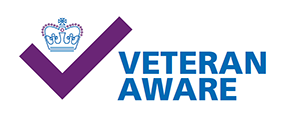Our Services A - Z - Vascular Surgery
About the service
Vascular services for the patients of Mersey and West Lancashire Teaching Hospitals NHS Trust (MWL) are provided by the Liverpool Vascular & Endovascular Service (LiVES).
The Liverpool Vascular and Endovascular Service (LiVES) operates across six hospitals in North Merseyside (Aintree University Hospital, The Royal Liverpool University Hospital, covering Southport and Ormskirk hospitals, and Whiston and St Helens hospitals.
Vascular services are for people with disorders of the arteries and veins. These include narrowing or widening of arteries, blocked vessels and varicose veins, but not diseases of the heart.
These disorders can reduce the amount of blood reaching the limbs or brain, or cause sudden blood loss if an over-stretched artery bursts. Although all of these diseases used to be treated by surgery only, more recently, specialists have been able to treat many vascular disorders by reaching the site of the problem via the inside of the blood vessels. This is known as endovascular surgery, and is a much less invasive approach.
Making these advanced techniques readily available to all patients is one of the goals of our service.
People helped by vascular services include:
People with abdominal aortic aneurysms: This is a condition in which the main artery in the abdomen becomes stretched and prone to bursting. Timely detection and treatment of abdominal aortic aneurysms prevents later problems with rupture and bleeding, and can be life-saving.
People with strokes or transient ischaemic attacks (TIAs or mini-strokes): Sometimes, there are problems with the blood supply to the brain because of a narrowing in a blood vessel in the neck called the carotid artery. This can be treated with an operation to improve the flow of blood and reduce the risk of future strokes.
People with poor blood supply to the feet and legs: Some people, particularly those who smoke or have diabetes, can develop narrowing's in the blood supply to their legs and feet. This can cause pain on walking, ulceration and/or infection. Surgical or endovascular treatments can improve the blood supply, make walking easier and prevent the serious complications of an inadequate blood supply.
- What you can expect from LiVES
Renowned Service
LiVES is both nationally and internationally recognised as an innovative and respected clinical unit. With a team of 15 consultant surgeons, specialist nurses and dedicated 'round the clock' vascular interventional radiology support, it is one of the largest vascular services in the United Kingdom.
Offering a comprehensive outpatient and day case service across all sites, whilst all inpatient care (treatment requiring overnight stay in hospital) takes place centrally at Aintree University Hospital.
Specialist, Multidisciplinary Team
Our patients are treated by specialist teams including specialist vascular nurses and doctors from other disciplines such as Interventional Radiology, Nephrology, Stroke Medicine, Neurology, Critical Care, Emergency Medicine, Diabetes, Anaesthesia and Cardiology. Ward 3 at Aintree University Hospital is dedicated to the care of vascular patients and has a multi-disciplinary team of nurses, physiotherapists and occupational therapists experienced in dealing with vascular patients
Comprehensive Care
As a principle, all cases considered for major surgery are discussed at weekly multidisciplinary team meetings, to ensure the best possible management is offered to our patients.
We offer;
- A one-stop diagnostic service (specialist investigations performed at the same time as the clinic consultation)
- Diagnostic tests and interventions on peripheral vascular disease (i.e.: Angiography/Angioplasty, Duplex Ultrasound, CT and MR angiography)
- Surveillance of small aortic aneurysms with ultrasound scans
- Assessment and treatment (by surgery or endovascular means) of large aortic aneurysms
- Supra-regional referral centre for the management of complex aortic aneurysms requiring treatment with fenestrated or branched endovascular repair
- Carotid surgery to prevent strokes.
- Minimally invasive treatments of complicated varicose veins and other venous disorders
Referrals
Referrals are made via your General Practitioner (GP), other hospital departments (including Accident & Emergency) or, for complex cases, via another Hospital Trust's Consultant. All emergency referrals and inpatient care (treatment requiring overnight stay in hospital) takes place centrally at Aintree University Hospital.
Routine outpatient appointments and follow up appointments still take place at your Mersey and West Lancashire Teaching Hospitals NHS Trust (MWL) hospital.
- About the Team
Directorate Manager
Emma WrightAssistant Directorate Manager
Tom PantakFour of the 15 Vascular Consultants from LiVES provide the onsite service to Whiston and St Helens hospitals. Emergency patients transferred to Aintree University Hospital will be cared for by the on call Vascular Consultant Surgeon of the Week.
LiVES Vascular Consultants at Mersey and West Lancashire Teaching Hospitals NHS Trust (MWL) can be viewed below.
The whole LiVES team can be viewed here: https://www.liverpoolft.nhs.uk/services/service-finder/vascular
- Location and Contact Details
Liverpool Vascular & Endovascular Service (LiVES), Vascular Surgery Department, Ground Floor, Whiston Hospital
Contacts
Mr E Katsogridak
Consultant Vascular & Endovascular Surgeon
Colette 0151 430 1499
Mr J Scurr
Consultant Vascular & Endovascular Surgeon
Pam 0151 430 1499
Mr A Millen
Consultant Vascular & Endovascular Surgeon
Sharon 0151 430 1528
Mr M Twigg
Consultant Vascular & Endovascular Surgeon
Sharon 0151 430 1528
Mrs Kate Donovan/ Ms Katerina Neophytou/ Mrs Pamela Costigan
Vascular Specialist Nurse
Direct Line: 0151 290 4508
Switch board: 0151 426 1600
- Relevant Leaflets/Documents/Links
Using the link below, you will be able to download and read the LiVES patient information leaflets.
https://www.liverpoolft.nhs.uk/services/service-finder/vascular
Every attempt has been made to make the information leaflets and the guides as factual as possible, but it is not possible for every point to be dealt with exhaustively.
Disclaimer
The information leaflets on this internet site are intended to advise and benefit patients who intend to use, or are using, the clinical services provided by Mersey and West Lancashire Teaching Hospitals NHS Trust (MWL) and the Liverpool Vascular & Endovascular Service (LiVES).
Mersey and West Lancashire Teaching Hospitals NHS Trust (MWL) does not accept responsibility for using the information contained in the leaflets for any other purpose than that described within them.
If you are concerned about your clinical condition you should seek qualified medical advice from your GP or the relevant clinical team at Mersey and West Lancashire Teaching Hospitals NHS Trust (MWL).
Vascular websites
http://www.vascularsociety.org.uk/
http://www.circulationfoundation.org.uk/
Smoking Cessation
http://www.nhs.uk/livewell/smoking/Pages/stopsmokingnewhome.aspx
Amputee Support
Page last updated on 03rd February 2025






